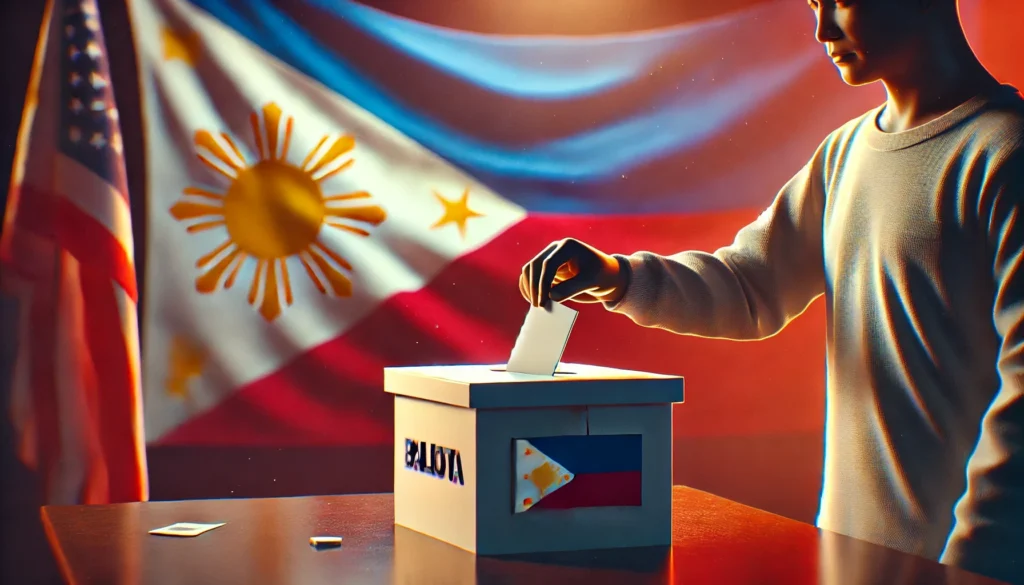The Philippines, a vibrant democracy in Southeast Asia, has a rich and complex electoral history. As one of the oldest democratic republics in Asia, the country’s electoral process plays a crucial role in shaping its political landscape and determining its future. This comprehensive blog post delves into the intricacies of Philippine elections, exploring their historical context, current processes, and profound significance in the nation’s socio-political fabric. From the mechanics of voting to the impact of technology on electoral integrity, we will examine the multifaceted nature of Philippine democracy and its ongoing evolution.
Historical Context of Philippine Elections
The roots of democracy
The Philippines’ journey towards democratic elections began during the American colonial period in the early 20th century. The introduction of limited suffrage and representative government laid the groundwork for the country’s future democratic institutions. However, it wasn’t until after gaining independence in 1946 that the Philippines truly began to shape its own electoral destiny. The post-independence era saw the establishment of a presidential system modeled after the United States, with regular elections becoming a cornerstone of Filipino political life.
Challenges and milestones
The path to a stable democratic process has not been without its challenges. The Philippines has experienced periods of authoritarian rule, most notably during the Marcos era from 1965 to 1986. This period was marked by widespread corruption, electoral fraud, and the suppression of political opposition. The People Power Revolution of 1986 marked a turning point, restoring democratic institutions and reinvigorating the electoral process. Since then, the country has made significant strides in strengthening its democratic foundations, although challenges such as political dynasties, vote-buying, and electoral violence continue to persist.
The Philippine Electoral System
Structure and governance
At the heart of the Philippine electoral system is the Commission on Elections (COMELEC), an independent constitutional body responsible for overseeing all aspects of the electoral process. COMELEC’s mandate includes voter registration, campaign regulation, and the conduct of elections for national, provincial, and local positions. The commission plays a crucial role in ensuring the integrity and fairness of elections, though its effectiveness has at times been questioned by critics and observers.
Types of elections
The Philippines conducts several types of elections at regular intervals:
- Presidential and Vice Presidential Elections (every 6 years)
- Senatorial Elections (every 3 years, electing half of the 24 senators)
- Congressional Elections (every 3 years)
- Local Elections (every 3 years, for provincial, city, and municipal positions)
- Barangay Elections (every 3 years, for the smallest local government units)
Electoral calendar
To provide a clear overview of the electoral cycle, here’s a table summarizing the major elections and their frequency:
| Election Type | Frequency | Positions Elected |
|---|---|---|
| Presidential and Vice Presidential | Every 6 years | President, Vice President |
| Senatorial | Every 3 years | 12 Senators (half of the Senate) |
| Congressional | Every 3 years | All members of the House of Representatives |
| Local | Every 3 years | Governors, Mayors, Vice Mayors, Provincial Board Members, City/Municipal Councilors |
| Barangay | Every 3 years | Barangay Captains, Barangay Councilors |
The Voting Process
Voter registration
The first step in participating in Philippine elections is voter registration. Citizens who are at least 18 years old are eligible to register as voters. The registration process typically involves visiting a local COMELEC office, providing proof of identity and residency, and having biometric data collected. COMELEC regularly conducts voter registration drives to ensure maximum participation, especially among first-time voters.
Casting ballots
On election day, registered voters proceed to their assigned precincts to cast their ballots. The Philippines has transitioned from manual voting to an automated election system, using optical mark recognition (OMR) technology. Voters fill out ballots by shading circles next to their chosen candidates’ names. These ballots are then fed into vote-counting machines, which tally the votes electronically.
Vote counting and transmission
After the polls close, the vote-counting machines generate election returns, which are electronically transmitted to various canvassing centers. This rapid transmission of results has significantly reduced the time required to determine election outcomes, although it has also raised concerns about the system’s vulnerability to hacking and manipulation.
Key Stakeholders in Philippine Elections
Political parties
Political parties play a central role in Philippine elections, fielding candidates and mobilizing voters. However, the country’s party system is often characterized as weak and personality-driven, with parties frequently shifting alliances and lacking clear ideological distinctions. Major parties include:
- Liberal Party (LP)
- Nacionalista Party (NP)
- Partido Demokratiko Pilipino–Lakas ng Bayan (PDP–Laban)
- Lakas–Christian Muslim Democrats (Lakas-CMD)
- Nationalist People’s Coalition (NPC)
Civil society organizations
Non-governmental organizations (NGOs) and civil society groups are crucial in promoting voter education, election monitoring, and advocacy for electoral reforms. Organizations like the National Citizens’ Movement for Free Elections (NAMFREL) and the Parish Pastoral Council for Responsible Voting (PPCRV) have been at the forefront of efforts to enhance electoral transparency and integrity.
Media
The media plays a vital role in shaping public opinion and disseminating information during elections. Television, radio, print, and increasingly, social media platforms serve as primary sources of election-related news and analysis. However, the concentration of media ownership and the spread of disinformation online pose significant challenges to informed voter decision-making.
Campaign Finance and Regulation
Spending limits
Philippine law sets strict limits on campaign expenditures to level the playing field and reduce the influence of money in politics. The current spending caps are:
- Presidential and Vice Presidential candidates: ₱10 per registered voter
- Other candidates: ₱3 per registered voter
- Political parties and party-list groups: ₱5 per registered voter
Disclosure requirements
Candidates and political parties are required to submit detailed statements of contributions and expenditures (SOCEs) to COMELEC. These reports are meant to ensure transparency and accountability in campaign financing. However, enforcement of these regulations has been challenging, with many candidates failing to comply or submitting incomplete reports.
Challenges and Issues in Philippine Elections
Vote-buying and electoral fraud
Despite legal prohibitions, vote-buying remains a persistent problem in Philippine elections, particularly at the local level. This practice undermines the principle of free and fair elections and distorts the will of the electorate. Electoral fraud, including ballot-box stuffing and the manipulation of vote counts, has decreased with the introduction of automated elections but remains a concern.
Political dynasties
The dominance of political dynasties is a long-standing issue in Philippine politics. Many elected positions are held by members of the same families, often passing from one generation to the next. This concentration of political power raises questions about the true representativeness of the country’s democracy and the equal opportunity for all citizens to participate in governance.
Violence and intimidation
Election-related violence, particularly in certain regions, continues to mar the democratic process. Incidents of intimidation, harassment, and even assassination of candidates and supporters occur with alarming frequency, especially during local elections. The presence of private armies maintained by some politicians further exacerbates this problem.
Technological Advancements and Their Impact
Automated Election System (AES)
The introduction of the Automated Election System in 2010 marked a significant milestone in Philippine electoral history. The AES has greatly reduced the time required for vote counting and result transmission, potentially decreasing opportunities for fraud. However, it has also introduced new challenges, such as ensuring the security and reliability of the electronic voting and counting systems.
Online campaigning and social media
The rise of social media has transformed campaign strategies and voter engagement in the Philippines. Candidates increasingly use platforms like Facebook, Twitter, and YouTube to reach voters directly. While this has democratized access to information, it has also facilitated the spread of disinformation and “fake news,” posing new challenges for electoral integrity.
The Significance of Elections in Philippine Society
Democratic consolidation
Regular elections serve as a crucial mechanism for the consolidation of democracy in the Philippines. They provide a peaceful means of transferring power and hold leaders accountable to the electorate. The high voter turnout in Philippine elections – often exceeding 75% – demonstrates the strong civic engagement of the Filipino people.
Socio-economic implications
Elections have far-reaching implications for the country’s socio-economic development. The policies and priorities of elected officials shape everything from economic strategies to social welfare programs. The outcome of elections can significantly influence foreign investment, trade relations, and the overall business climate of the country.
International relations
Philippine elections are closely watched by the international community, as the country plays a strategic role in Southeast Asian geopolitics. The choice of leadership can affect regional alliances, security cooperation, and the country’s stance on issues such as territorial disputes in the South China Sea.
Future Prospects and Reforms
Continuing challenges
Despite progress, Philippine elections continue to face challenges that require ongoing attention and reform efforts. These include:
- Strengthening the party system to promote policy-based rather than personality-driven politics
- Enhancing the enforcement of campaign finance regulations
- Addressing the digital divide to ensure equal access to information for all voters
- Combating disinformation and improving media literacy
Proposed reforms
Various stakeholders have proposed reforms to further improve the electoral process:
- Implementation of a national ID system to streamline voter registration and reduce fraud
- Stricter regulations on political dynasties
- Improvements to the automated election system, including open-source software and enhanced auditing capabilities
- Expansion of overseas voting to increase participation among the large Filipino diaspora
Conclusion
Elections in the Philippines stand as a testament to the country’s enduring commitment to democracy, despite the many challenges it has faced and continues to confront. The electoral process, with its complex interplay of historical, cultural, and technological factors, remains a critical mechanism for shaping the nation’s future. As the Philippines continues to refine and strengthen its democratic institutions, the active engagement of citizens, civil society, and government stakeholders will be crucial in ensuring that elections truly reflect the will of the people and contribute to the country’s progress and development.
By understanding the intricacies of the Philippine electoral system, its strengths, and its areas for improvement, we can better appreciate the significance of this fundamental democratic exercise. As the nation moves forward, the continuous evolution of its electoral processes will play a pivotal role in determining the Philippines’ trajectory as a key player in Southeast Asia and the broader global community.
Disclaimer: This blog post is based on information available at the time of writing and aims to provide a general overview of elections in the Philippines. While every effort has been made to ensure accuracy, electoral laws and processes may change over time. Readers are encouraged to consult official sources such as the Commission on Elections (COMELEC) for the most up-to-date and specific information. If you notice any inaccuracies in this post, please report them so we can promptly make corrections.




